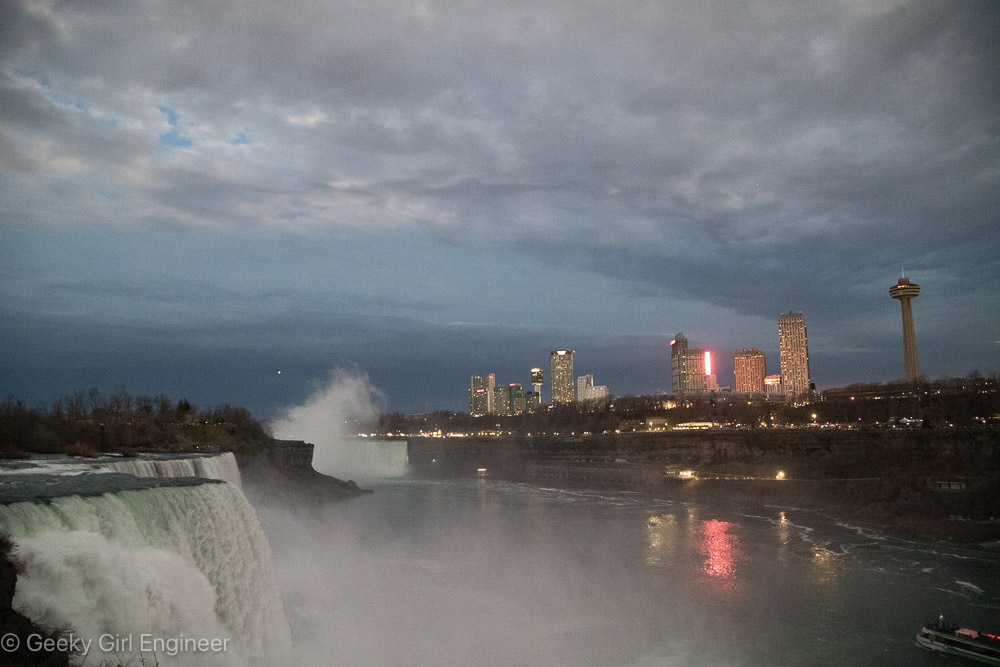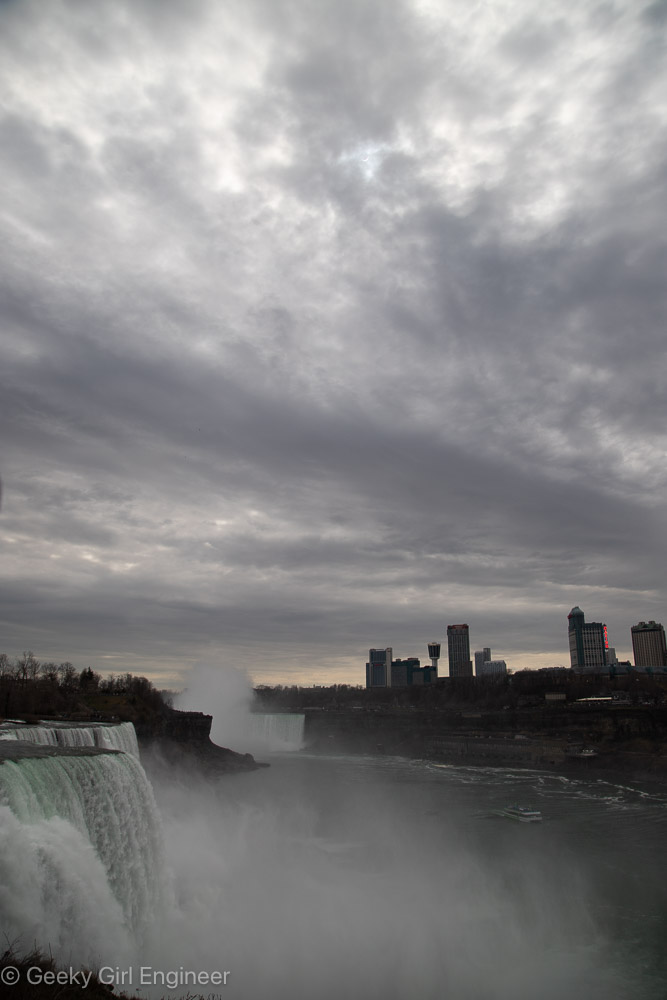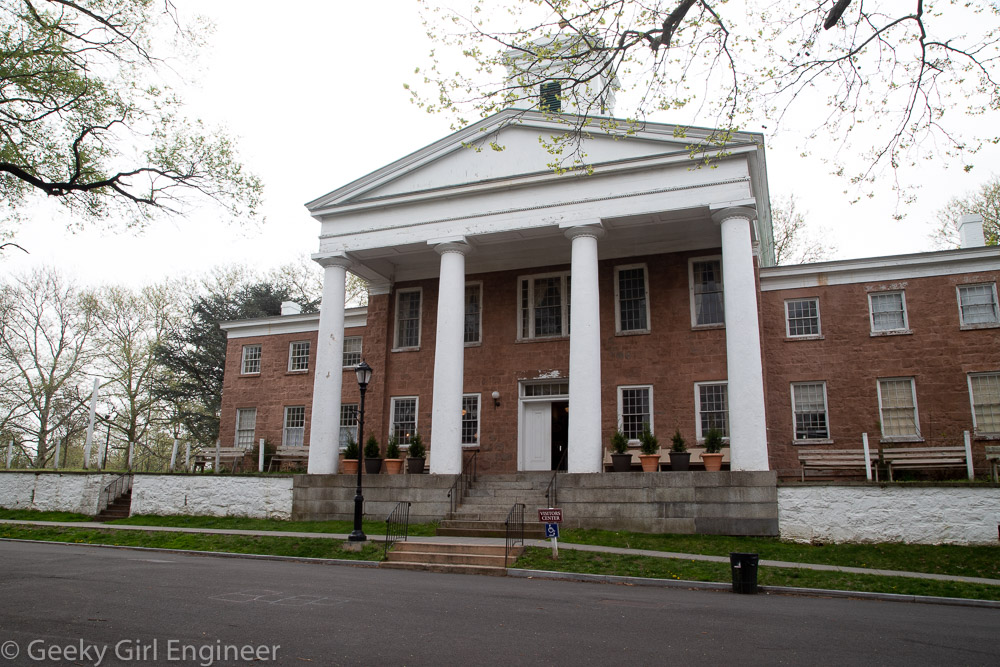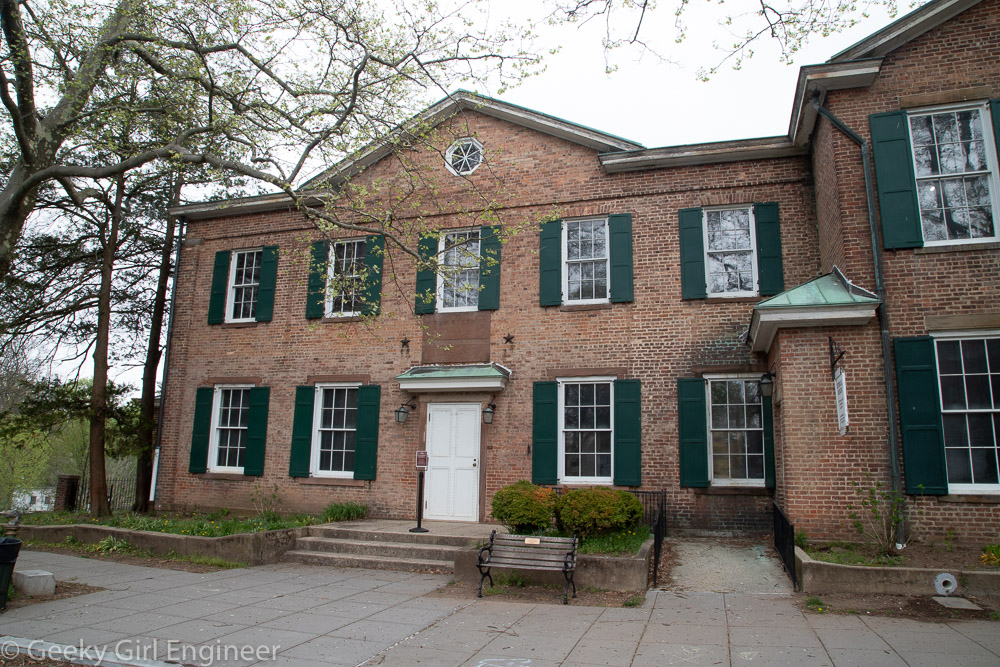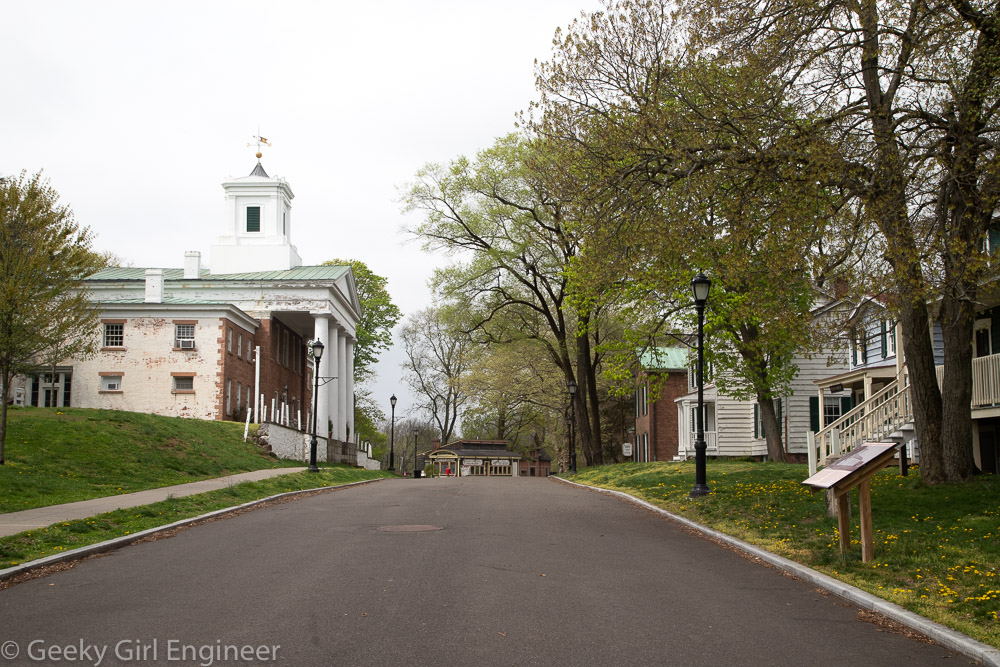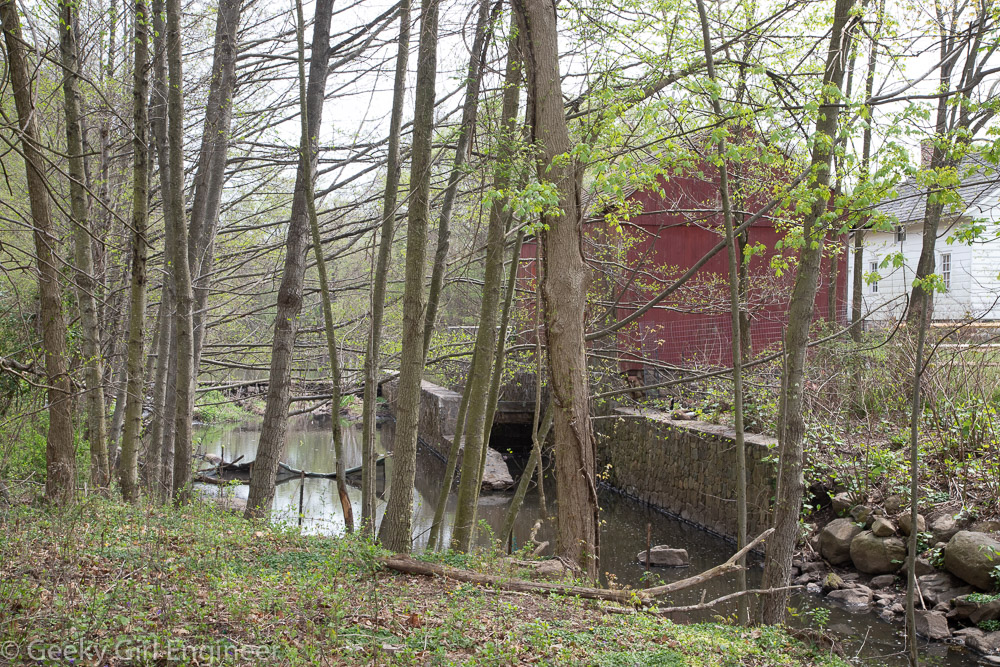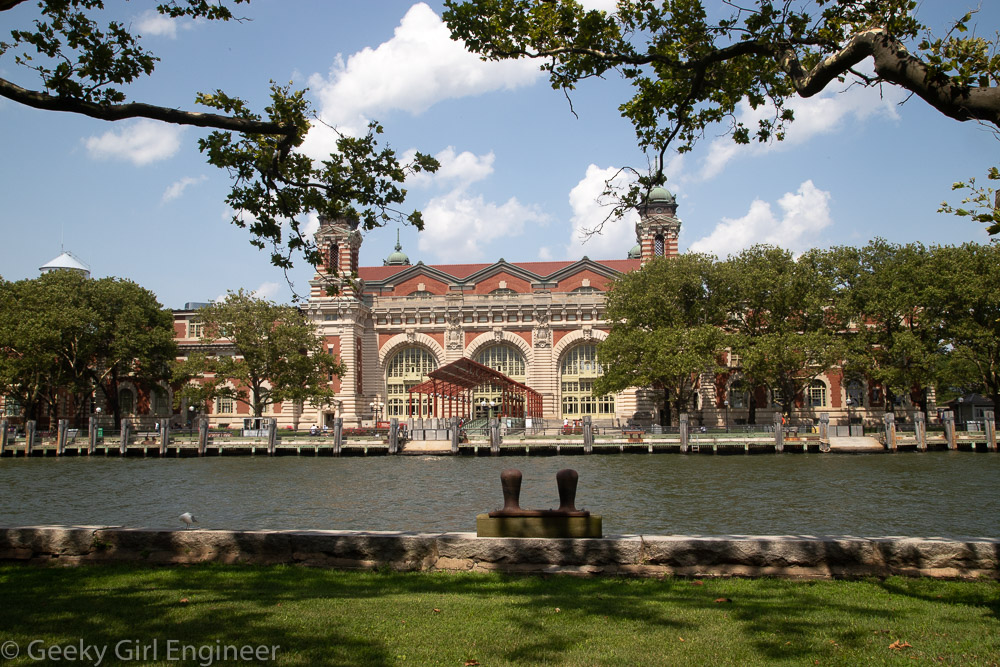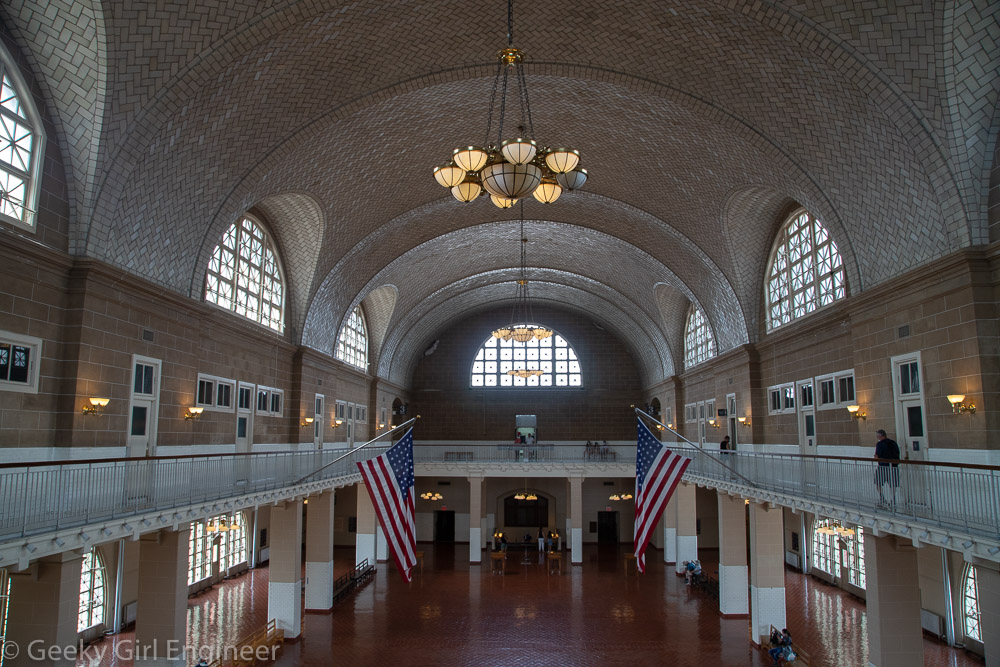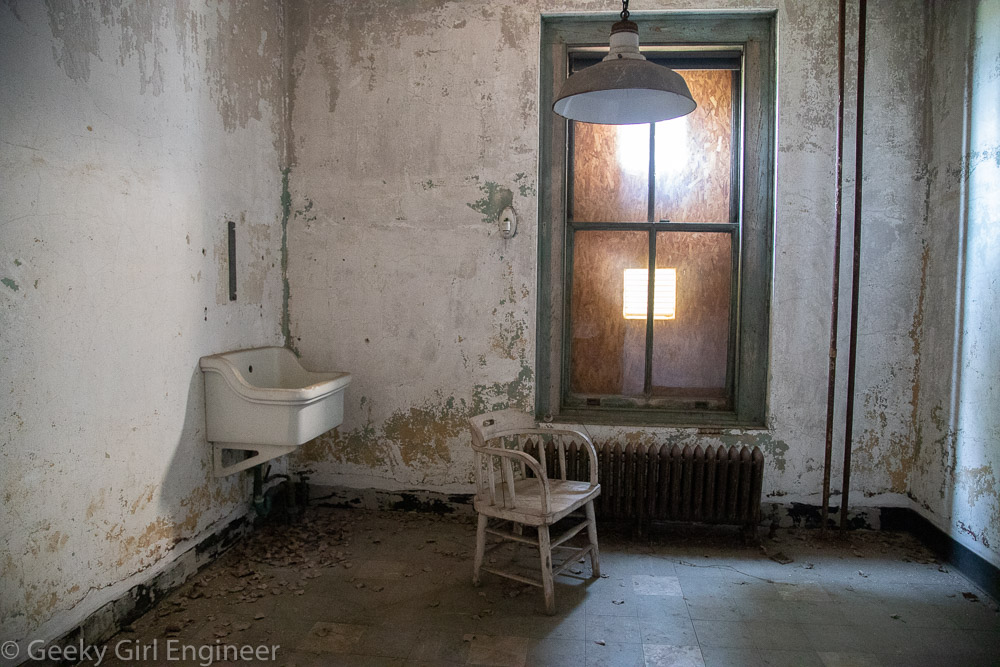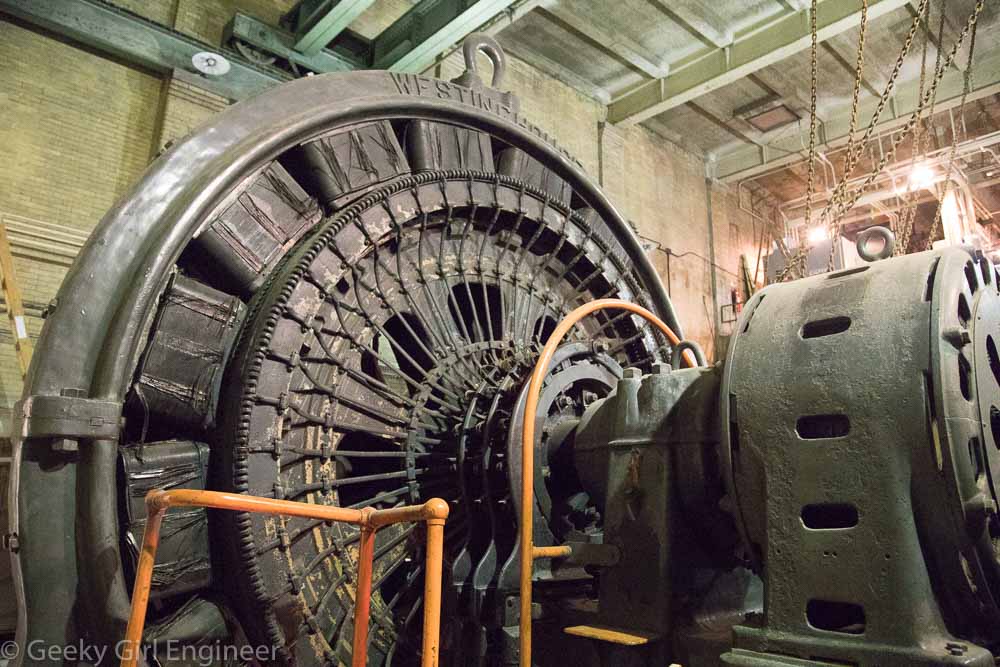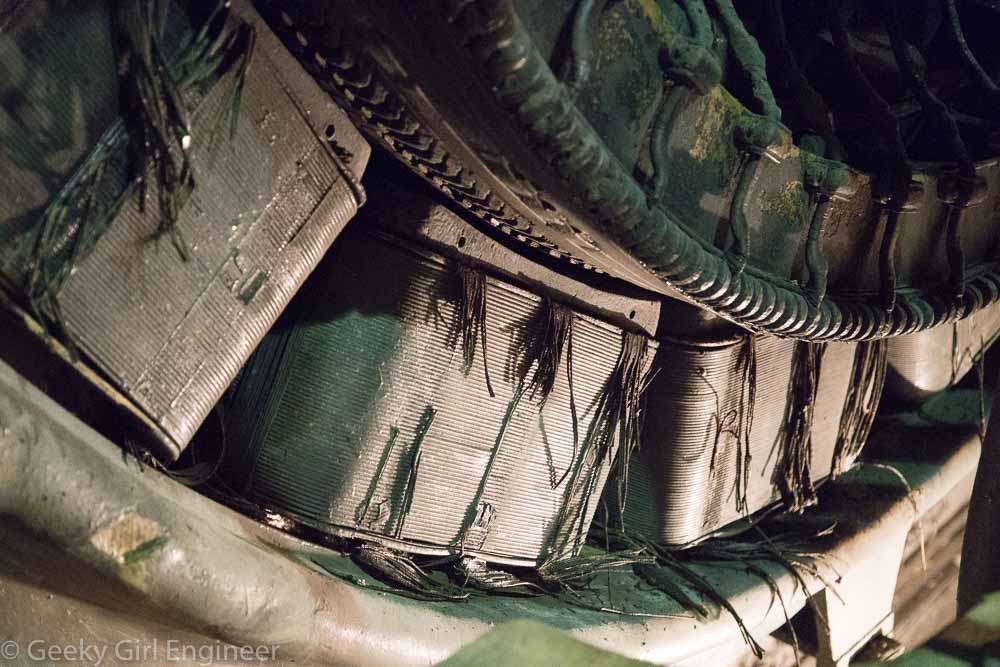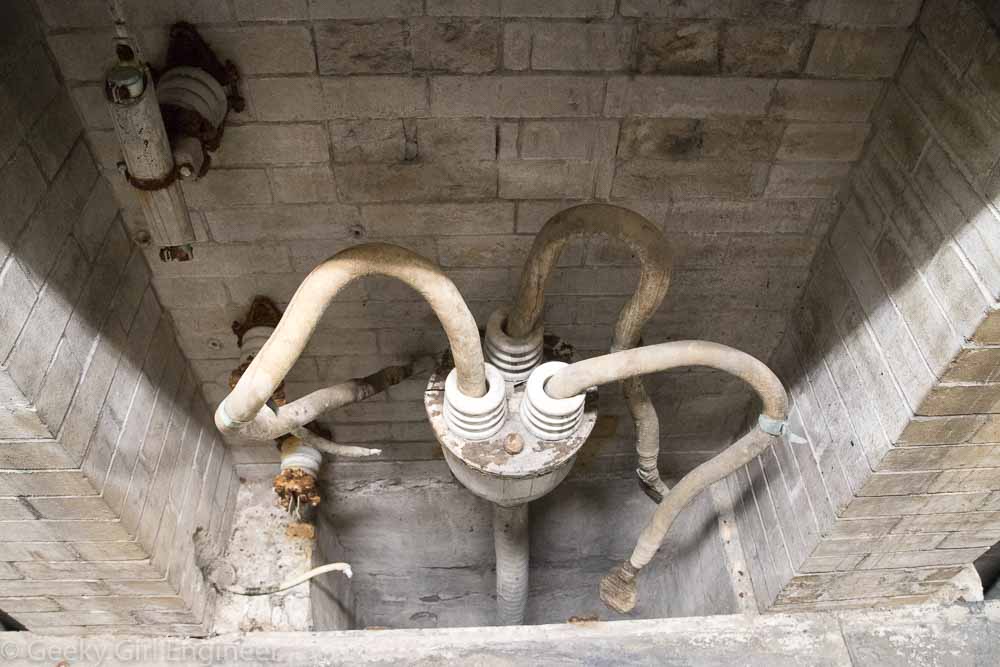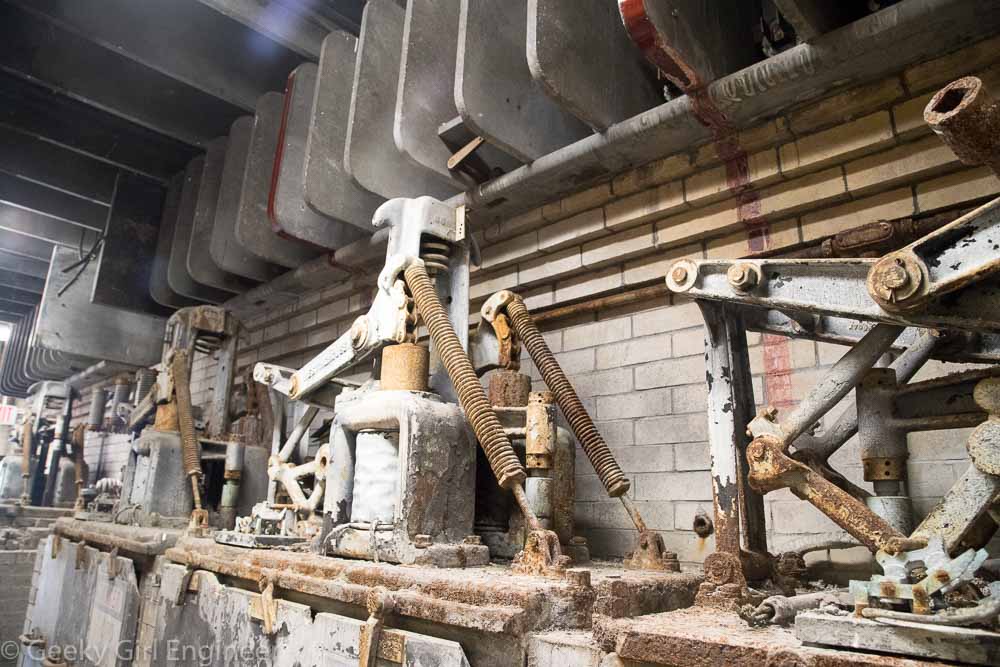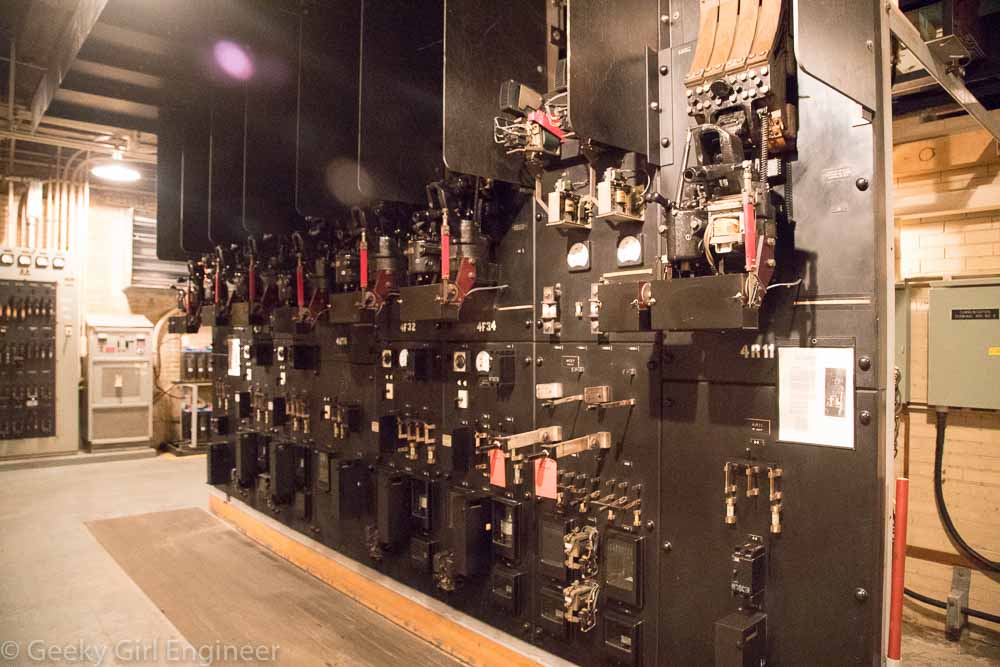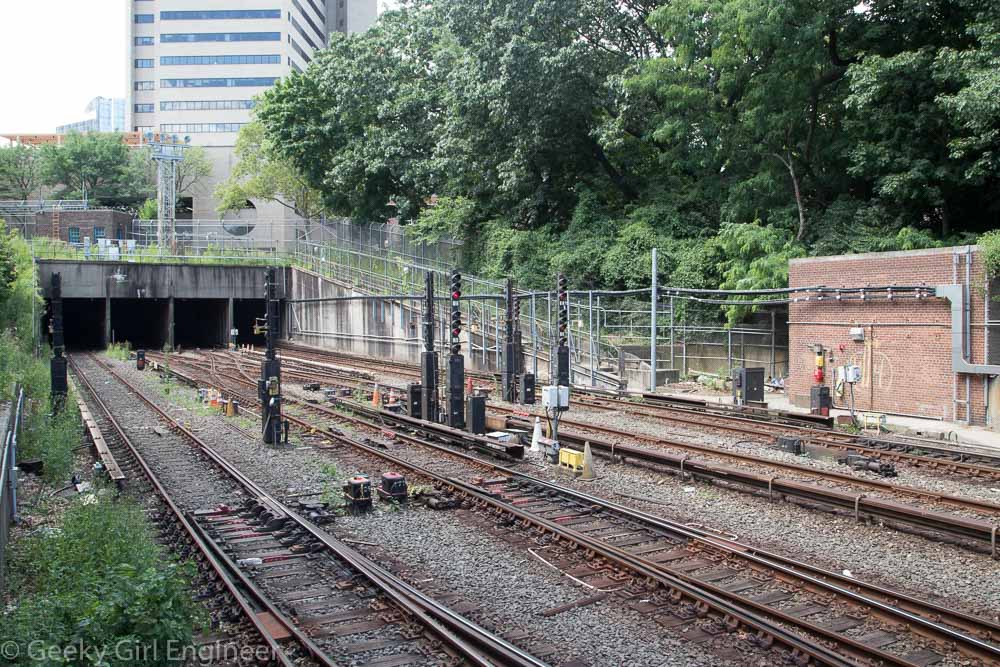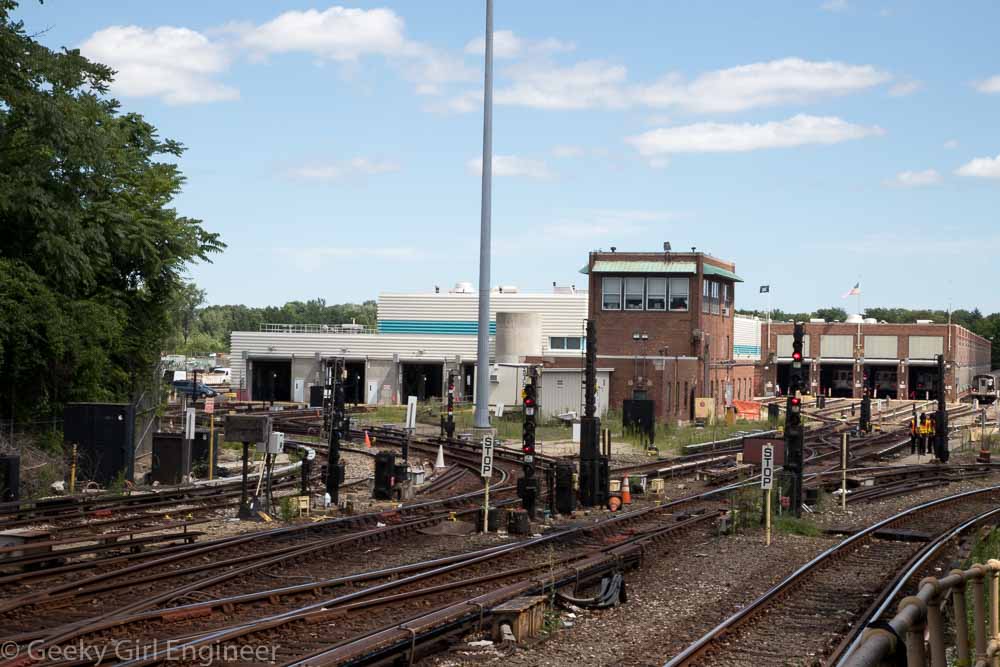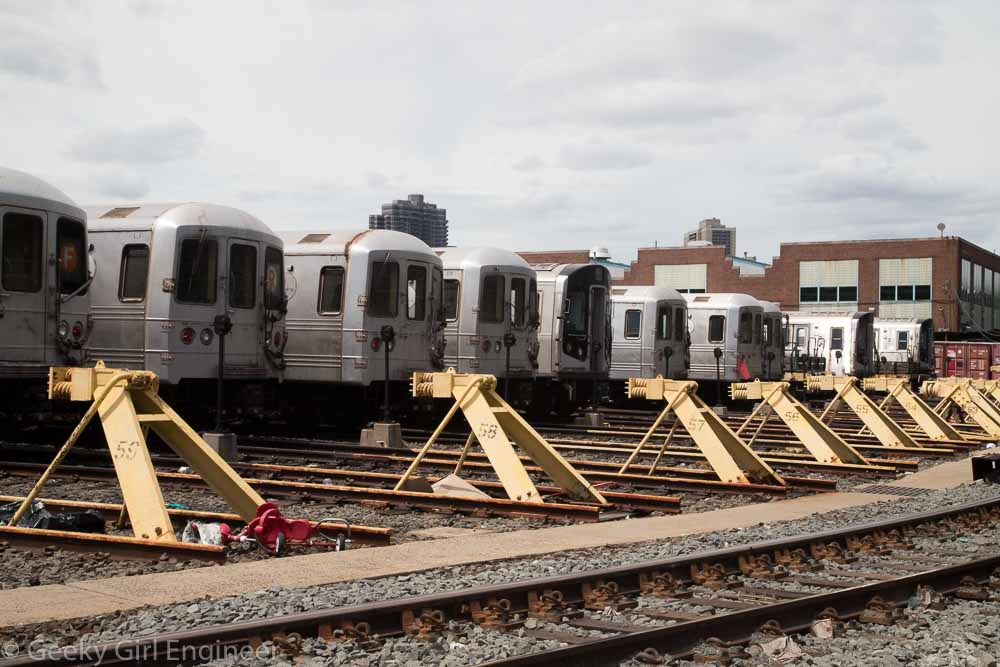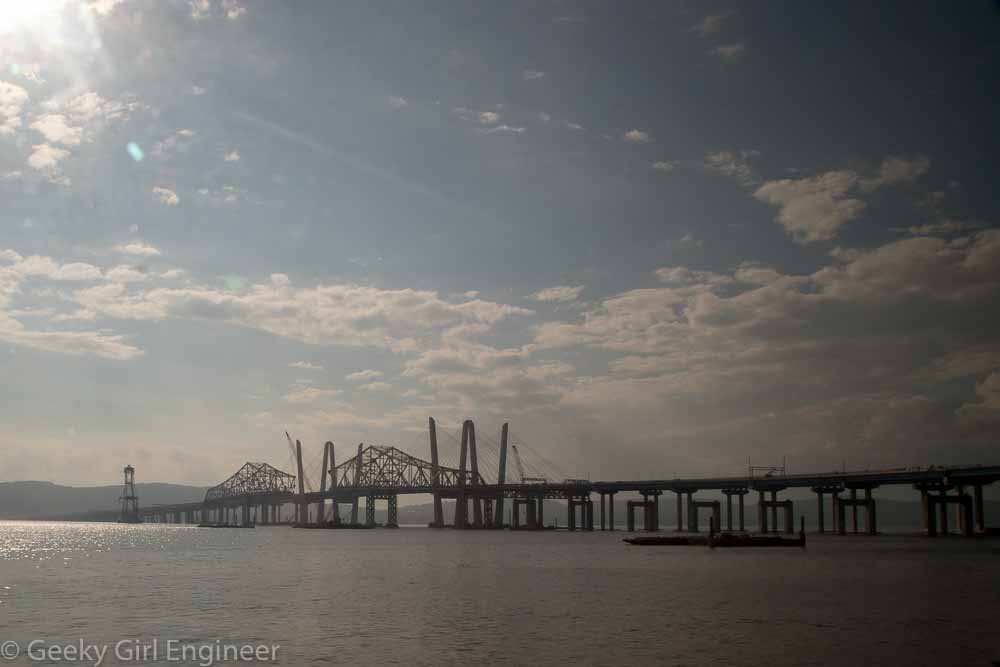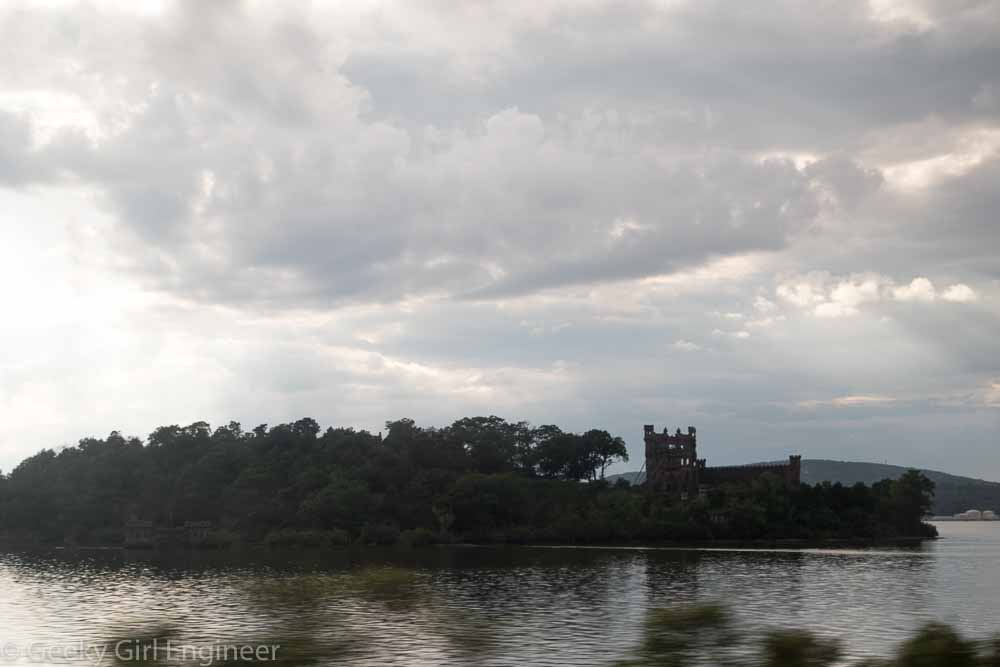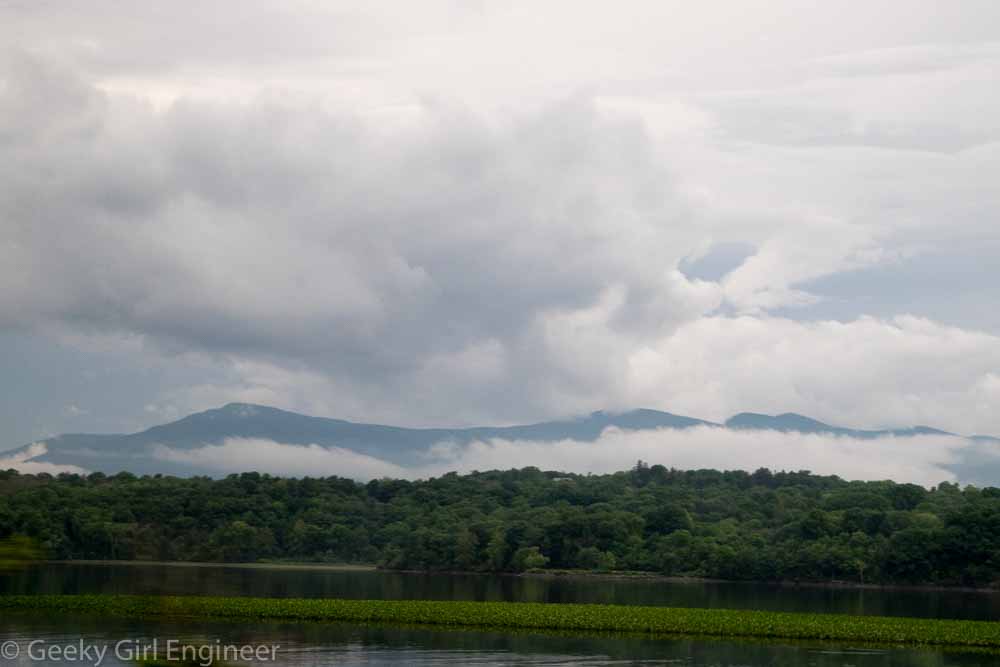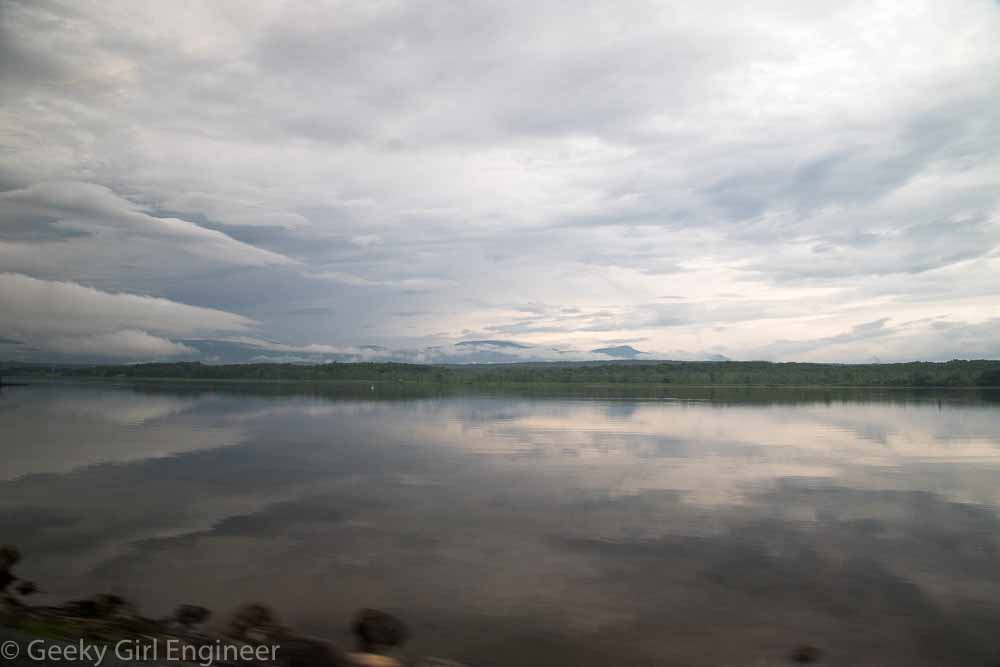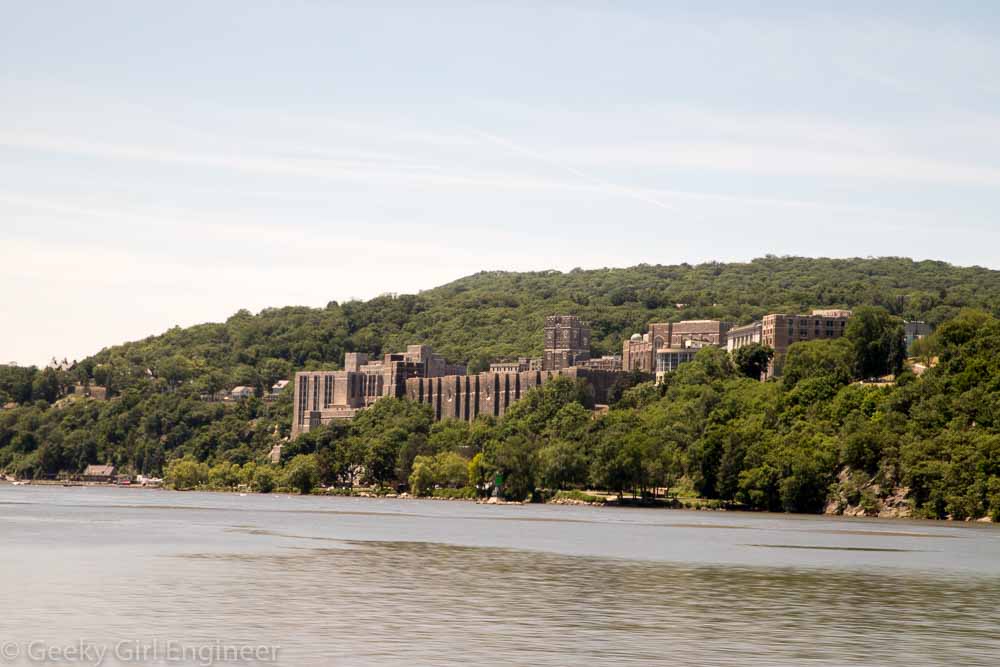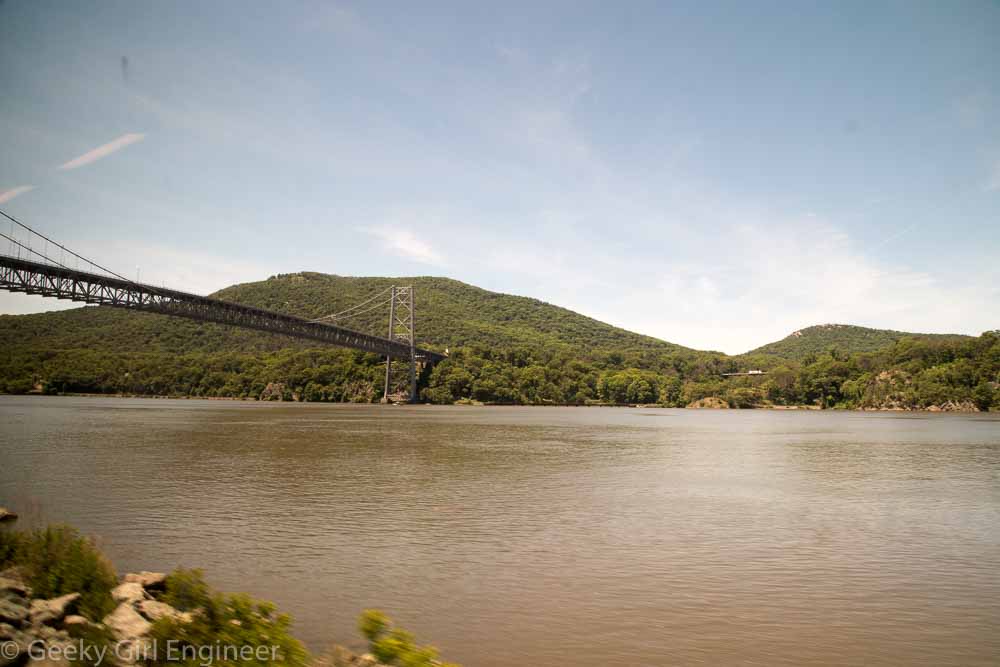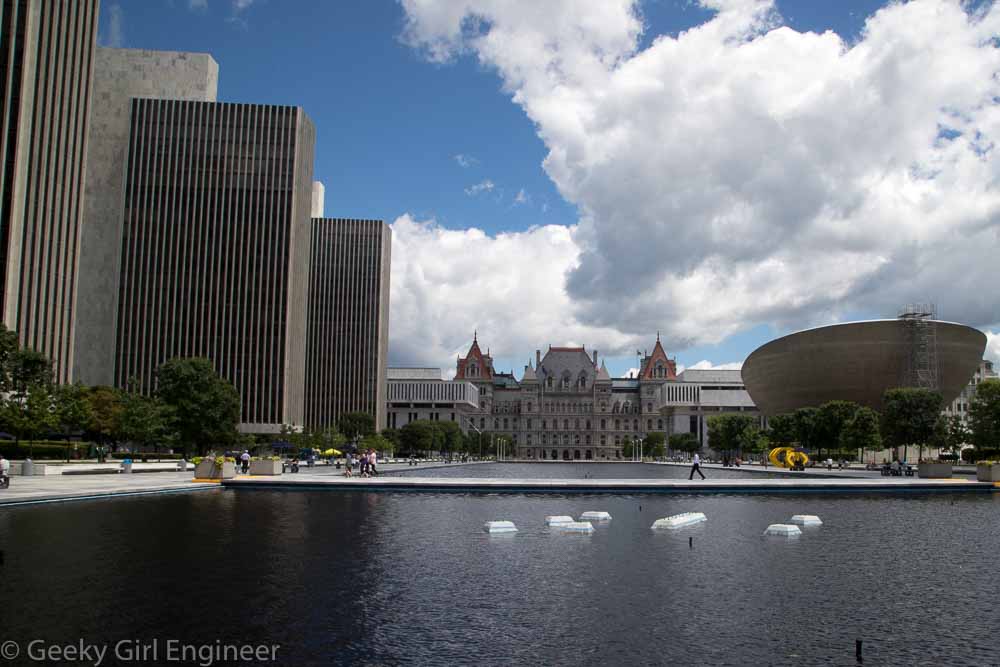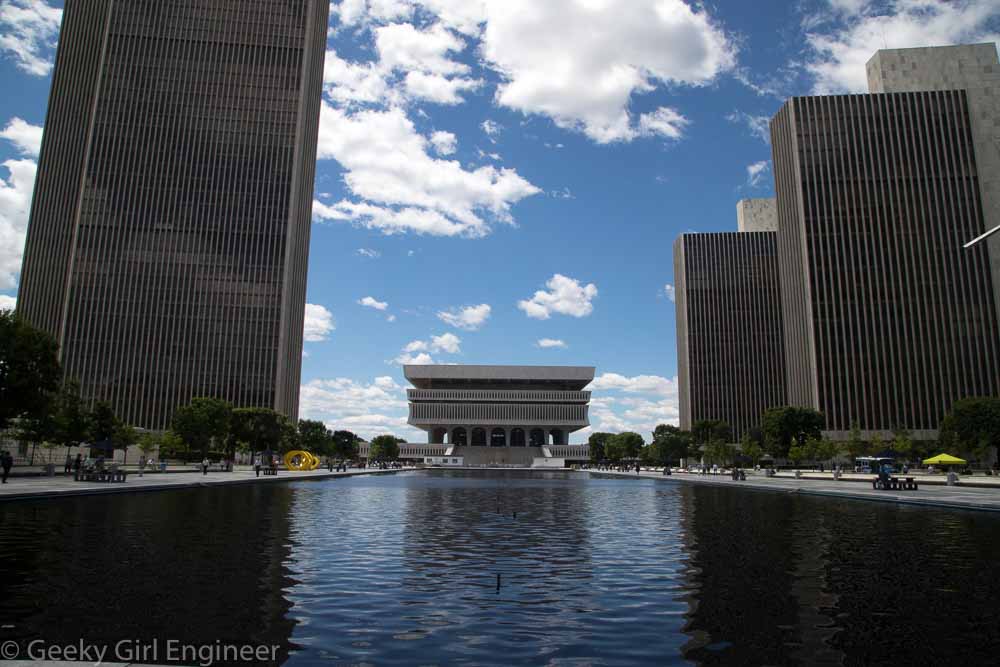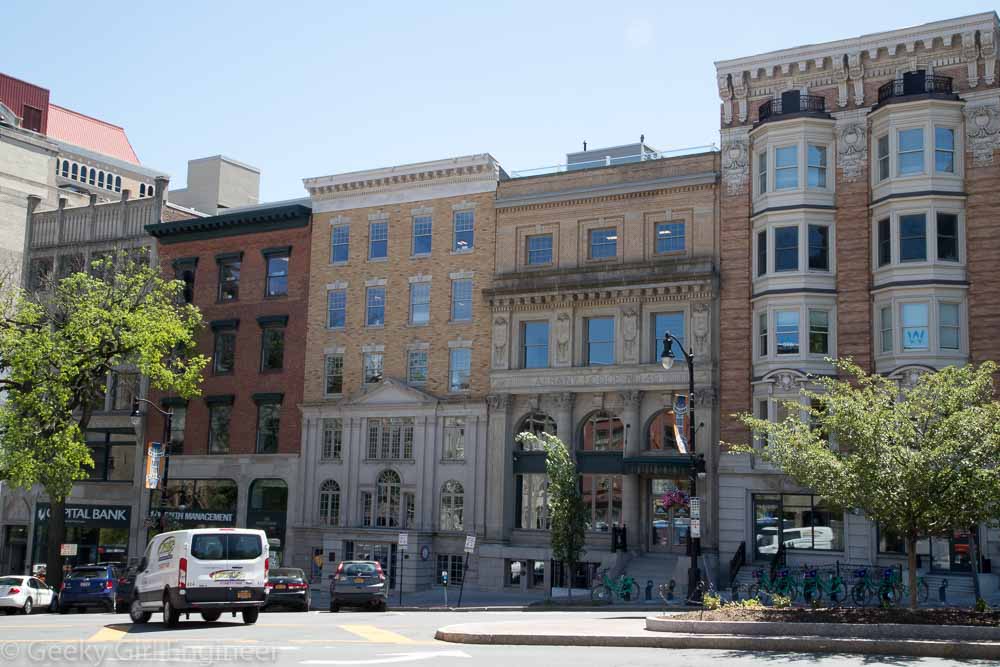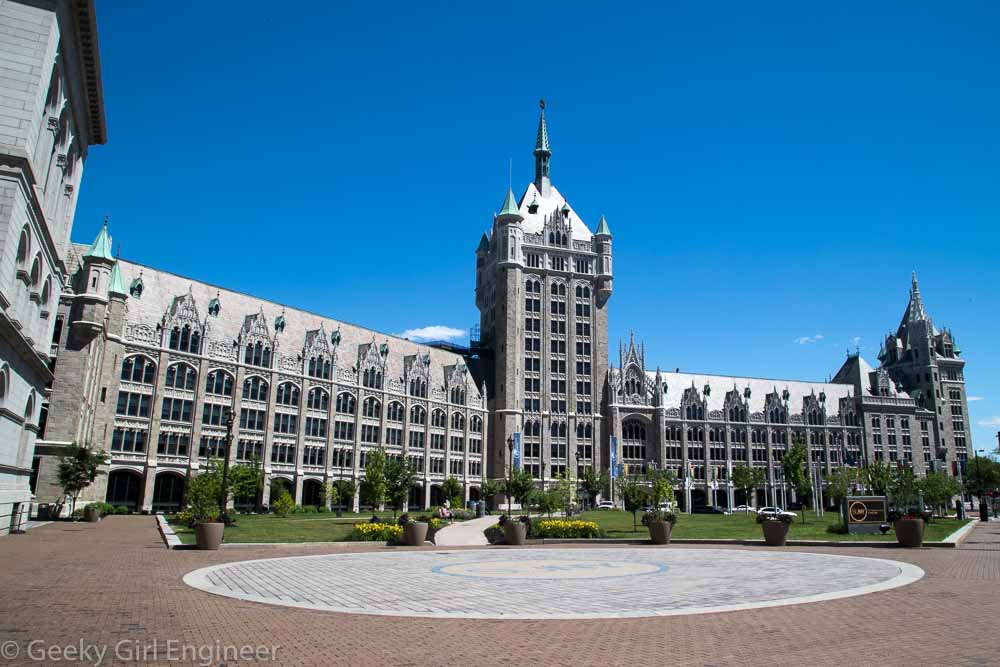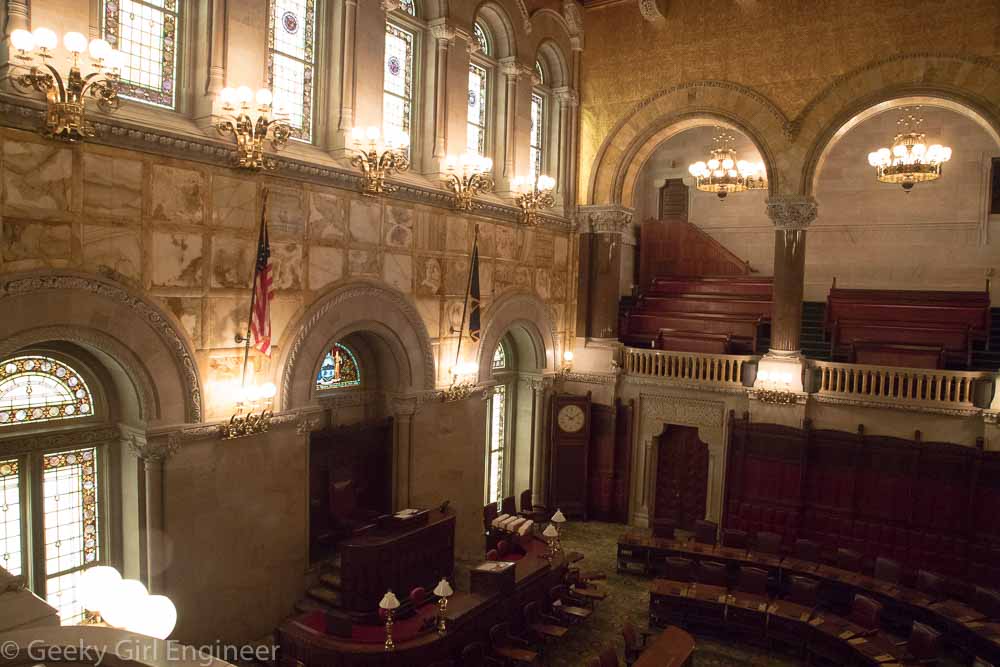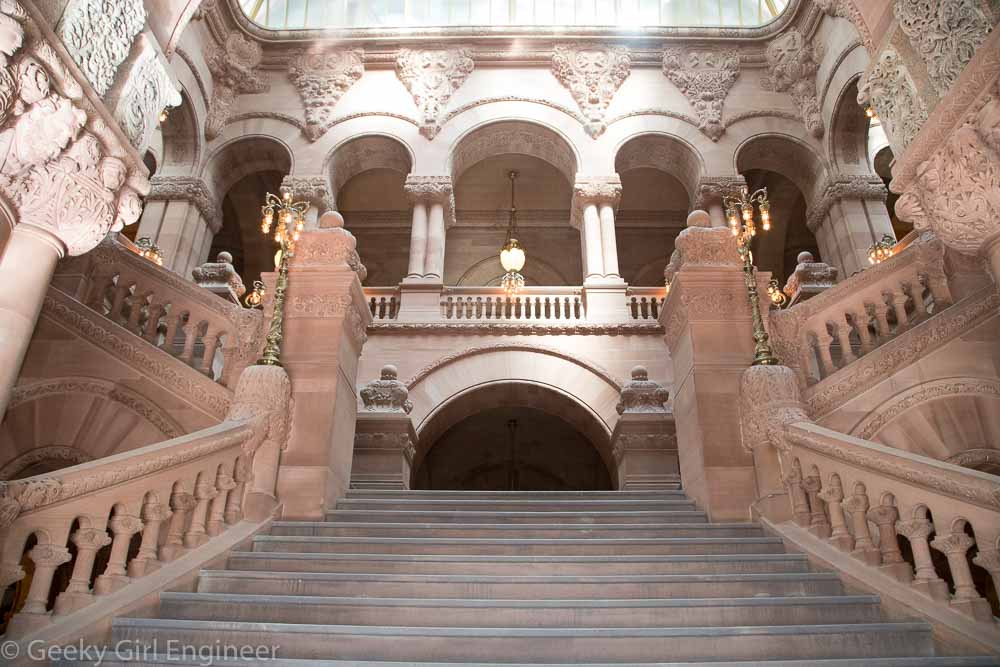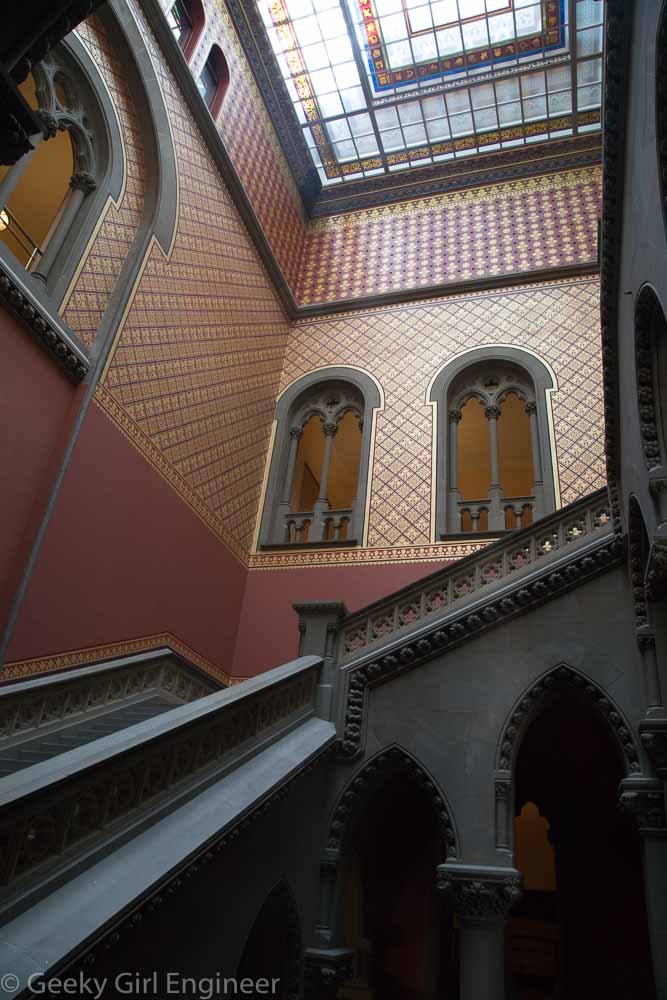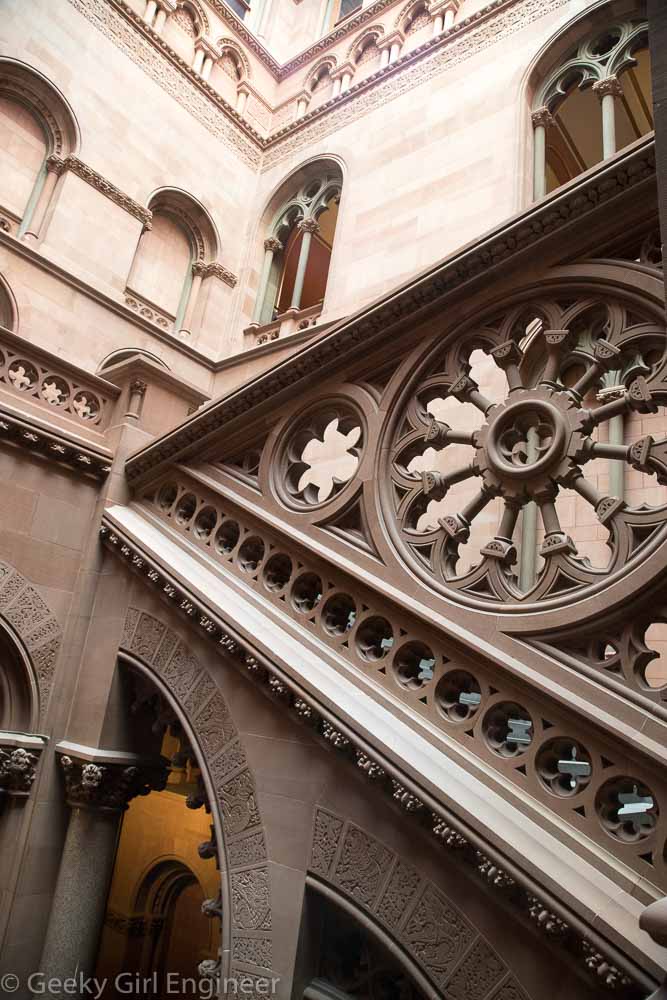I came to Niagara Falls for the 2024 total solar eclipse with the idea of spectacular images of the eclipse above the falls. Unfortunately the weather did not cooperate. I was really lucky with clear skies for the 2017 eclipse, so the overcast skies was really disappointing. I got a couple of glimpses of the partial eclipse. Totality did not disappoint. It’s been seven years since I last experienced totality, but I feel like totality was more dramatic this time. It was so overcast that it was already cool and not bright, so when totality hit, it felt very much like night and was very dark.
Tag Archives: New York
Historic Richmond Town, Staten Island
Last week, I went for a guided walk with NYC H2O of historic Richmond Town, Staten Island to hear about the history there, in particular how the water affected the history. Historic Richmond Town is a neat little area as it is a park of historic buildings. If I read the information correctly, some of them were moved there to be part of the preservation area. There is a mill there that operated off the creek that runs by the area. Nearby and also part of our walk is Brookfield Park, which is a former landfill. From an environmental engineering perspective, it is nice to see what the landfill has become. Although it is not clear if remediation is ongoing, as the landfill was rather old, so it is not clear what engineering, if any, went into it.
Ellis Island
I went to New York City for a quick trip and finally did one of those tourist things that are generally on the last of my list to do. On several occasions, I have traveled to tour a wastewater treatment plant or landfill or some other engineering work, but pure tourist locations are things I go to if I can fit them into my schedule. I visited the Statue of Liberty a couple of decades ago, and I would like to go again. However, for this trip, I visited Ellis Island, partly because they had spots on the hard hat tour of the work being done there available. An interesting historic site plus engineering work definitely fits the bill of my interests. The original Ellis Island immigration building is open including the restored Great Hall (i.e. Registry Room) with numerous interesting exhibits. The hard hat tour however allows you to tour parts of the hospital on the other side of the island that are being stabilized and restored. The buildings are fascinating, especially from a modern viewpoint. [This immediately makes me wonder how someone in 100 years will view our buildings such as hospitals.] I also find the work being done to restore the buildings fascinating. The hard hat tour is a great way for the National Park Service to highlight work that is being done and needs to be done when there is funding. The tour is very informative, but I have to admit the tour could be a lot better. The main problem with the tour is trying to hear the tour guide. There is no audio technology used. It was only how loud the guide talked, and the guide I was with did never bothered to find out if those at the back could hear what he was saying. He rarely waited for everyone to catch up before talking, and as I was generally in the back trying to get photos, I missed half of what he was saying. The audio problem is compounded by the fact that area being toured is an active worksite, so there were also lawnmowers, banging, and other equipment noise in the background. Still, touring the area was fascinating and informative.
Note with the photos below that most of the buildings being restored have had all their windows covered with plywood that has a small plastic window and a ventilation panel. The plywood prevents the elements from getting in and further degrading the structures, and the window and ventilation panel helps prevent mold from growing inside the buildings.
Mother Clara Hale Bus Depot
I recently got the opportunity to tour New York’s MTA’s Mother Clara Hale Bus Depot with the New York Transit Museum. It is the newest bus depot in New York, and it features many innovative and environmentally friendly design. It has a green roof. Stormwater from the roof in reused in the facility for bus wash. It has a thermal wall that absorbs heat in the winter. It is a really well designed facility, and it is huge. There are also many buses at the bus depot because of course the bus depot is for maintenance and repairs.


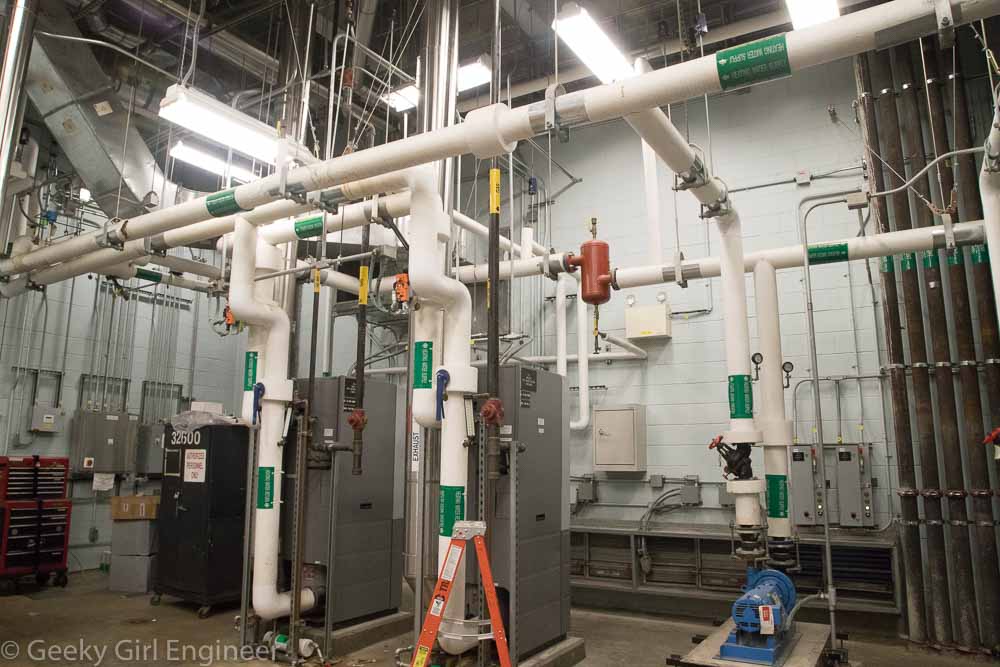

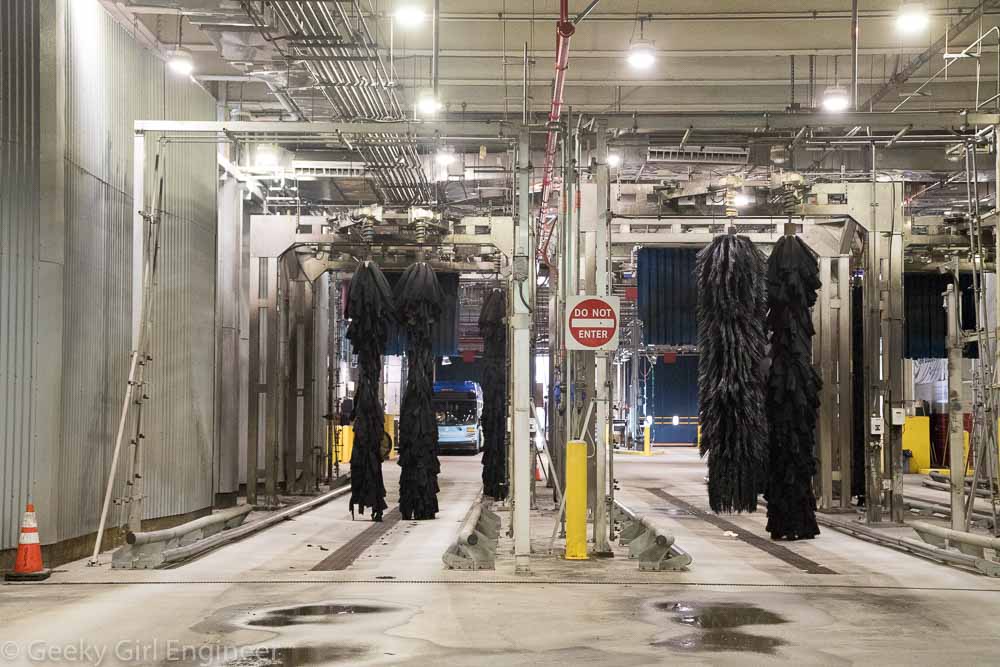
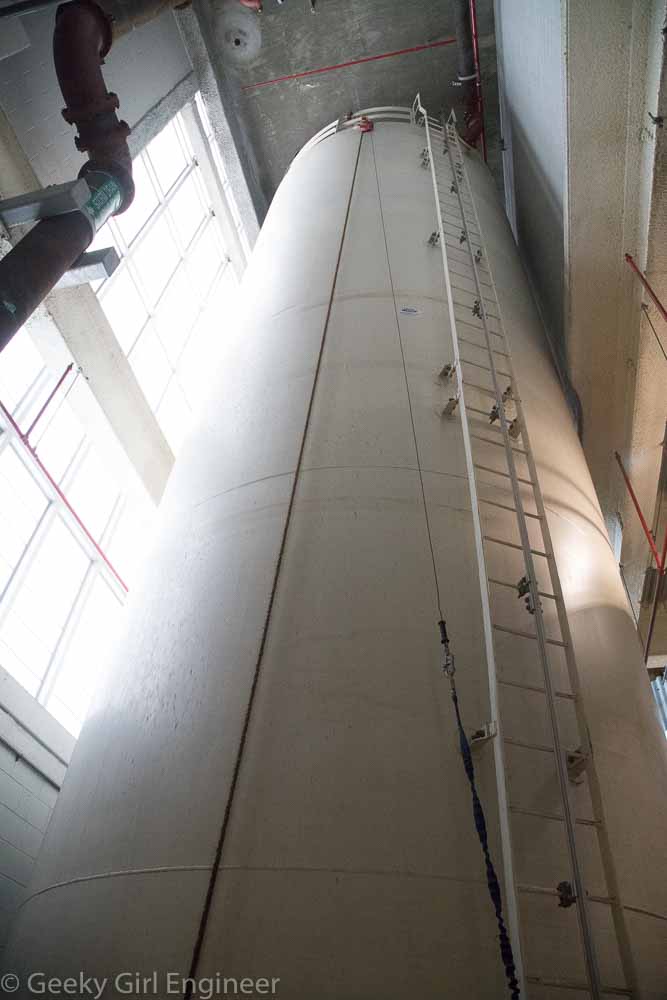






MTA’s Flatbush-Empire Substation
I took another tour with New York Transit Museum today. This one of the Flatbush-Empire Substation, formally known as Old Prospect Park Substation. It was constructed in the early 1900s to originally provide power for Brooklyn trolleys and then was used to provide power to the subways. Sadly, the substation sits right above where the Malbone Street disaster occurred, where approximately 100 people lost their lives in 1918 when an untrained conductor was operating a subway train during a labor dispute. The substation played a role in the disaster when the circuit breakers tripped at the station from the train accident, and the substation operator restored power to the rail thereby electrocuting any victims on the tracks because the system operators thought the breakers had tripped due to a prank by strikers.
The substation originally converted AC power from the grid to DC using rotary convertors. Now they use modern thingamajigs that are not nearly so cool looking. The downstairs of the substation has all the old unused parts, not to mention all the hazardous chemicals that had to be removed. There are capacitors where PCBs had clearly been removed, and other places painted with a white sealant after asbestos had been removed. Upstairs is where the boring gray boxes filled with modern electronics that actually do the work now are. The substation does not have a working rotary convertor by the way. The only one left owned by MTA is at Substation #13 (see that post for photos and video).
Fungus
I love to photograph fungus. I don’t know why, but I do. I don’t really like to eat fungus, but I like looking at it. More accurately I suppose, I like looking at the fruiting bodies of fungus. I’m in an area of New York that is filled with forest, and they have recently gotten a lot of rain. Fungus are growing and reproducing in earnest. I’m visiting relatives, and in one small area on their property, I spotted what I guess are at least six different types of fungus. So I went crazy with my camera.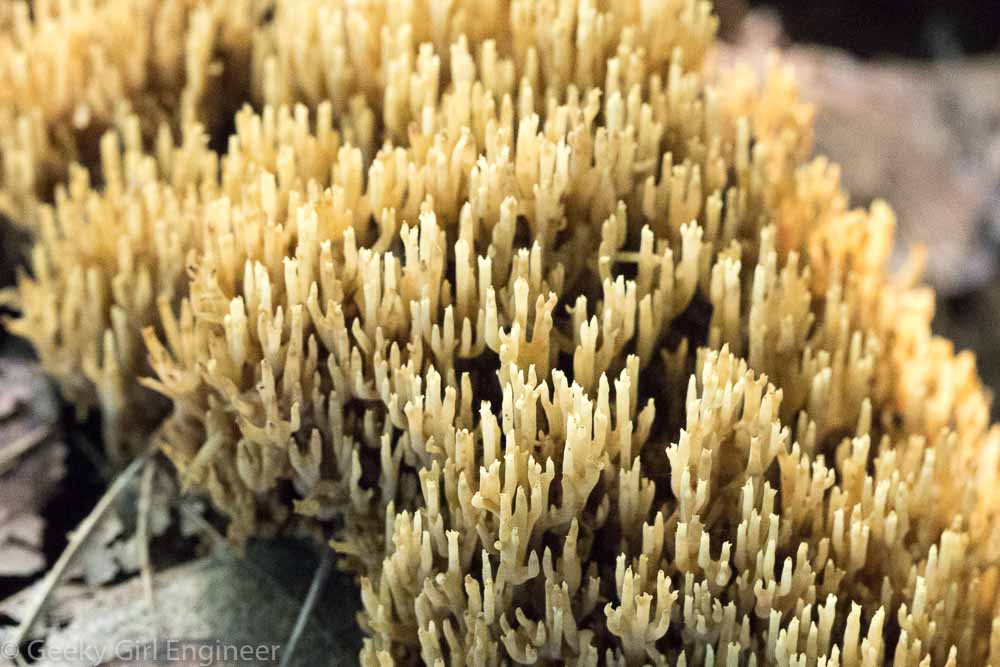
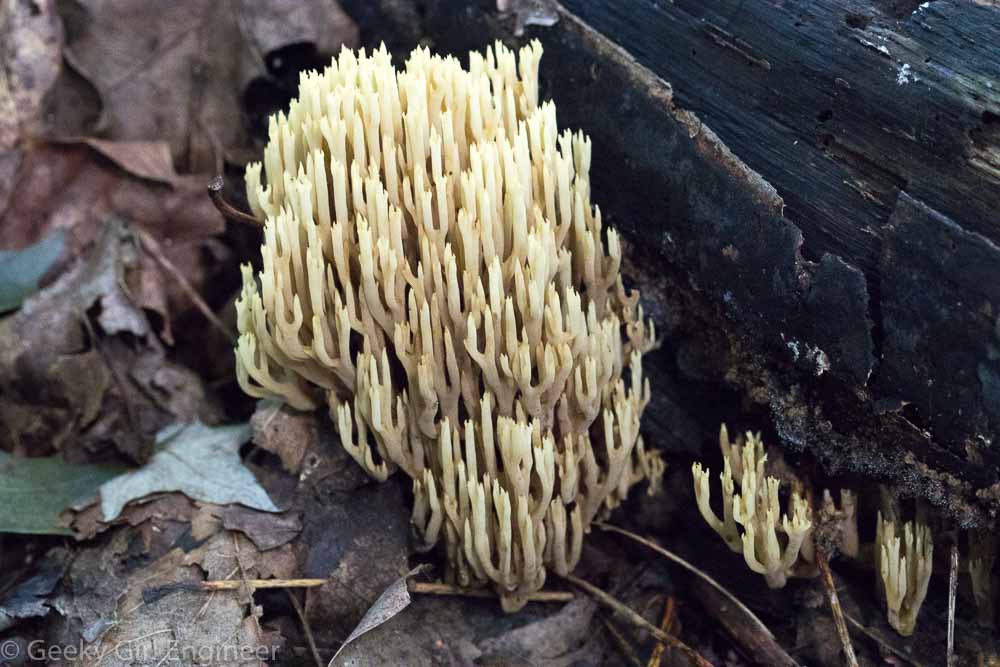

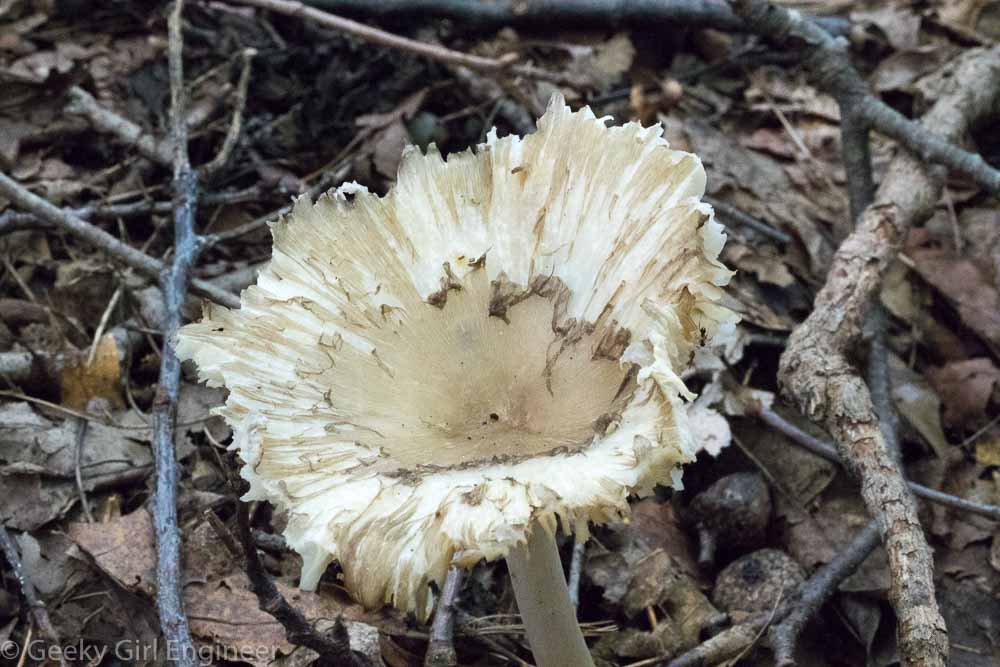
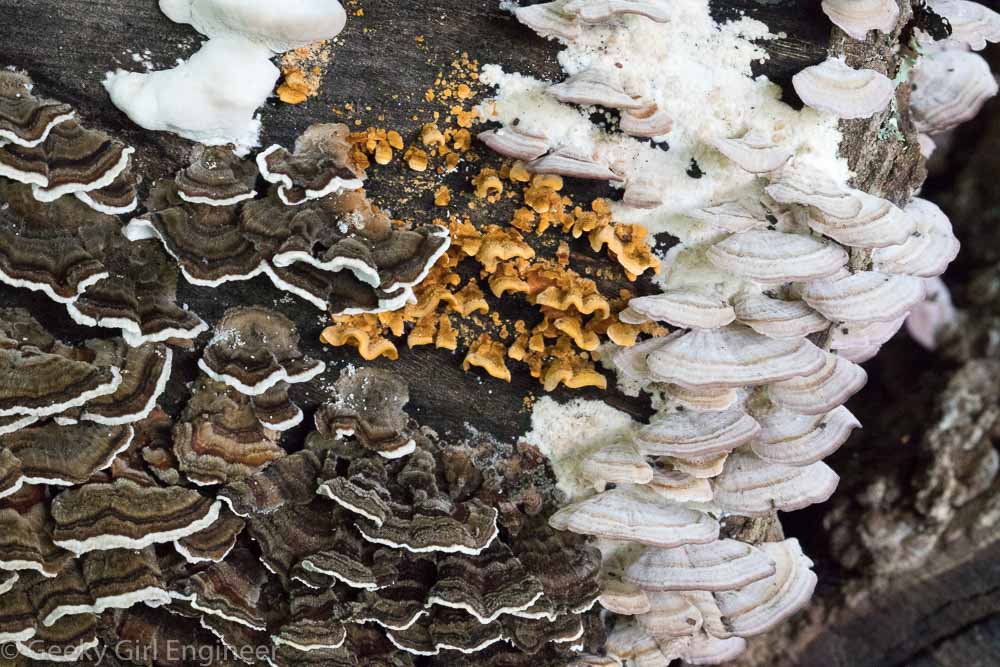
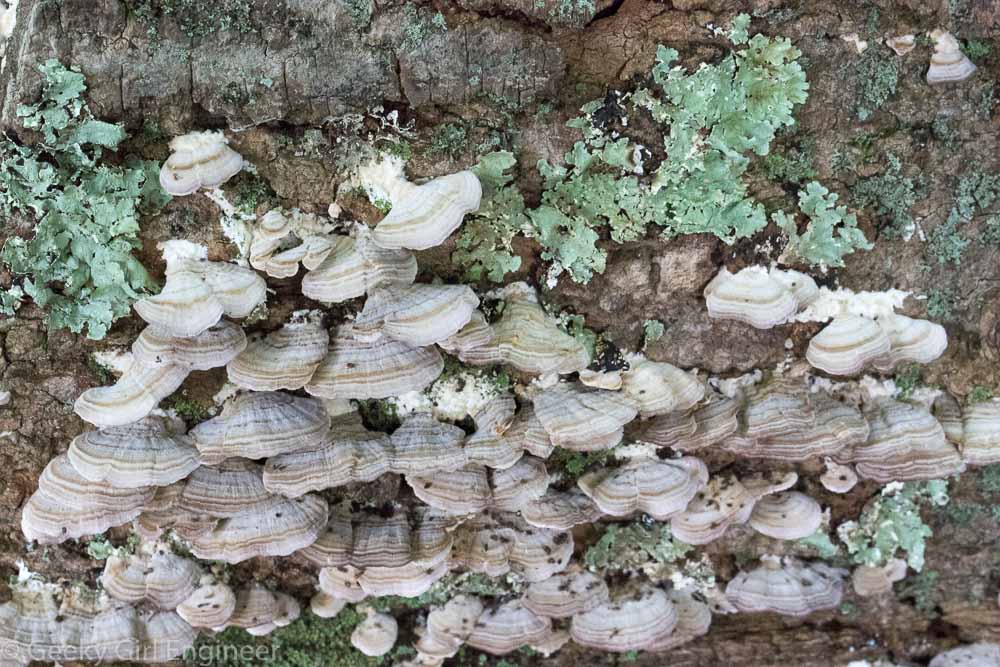

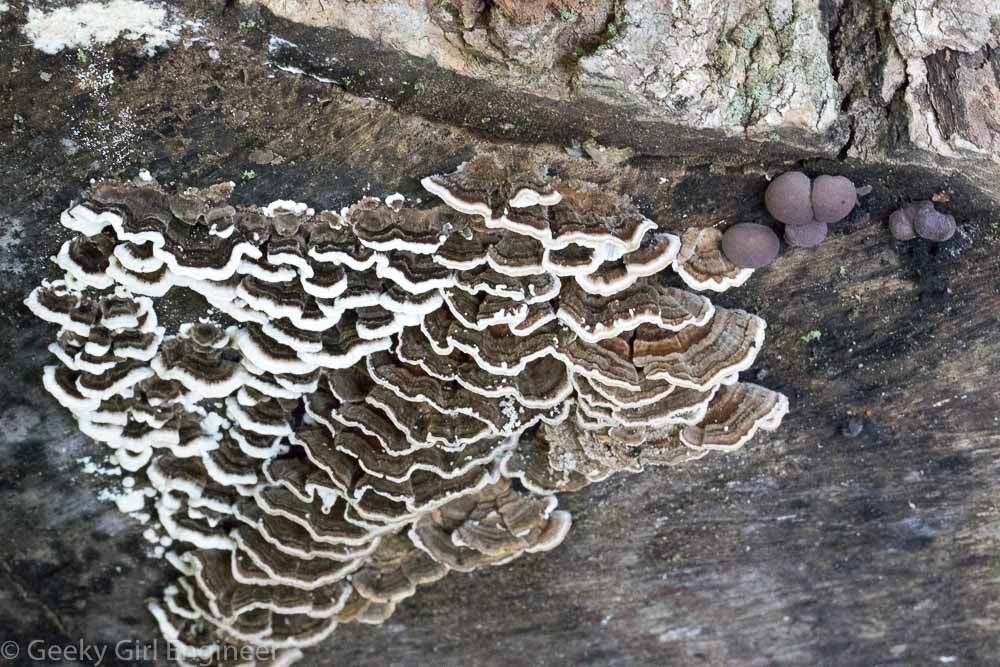
MTA’s Jamaica Yards
I took another tour with the New York Transit Museum today. This one was of Jamaica Yards in Queens, where maintenance is performed on subway cars. I love touring these yards. Jamaica Yards was different then some of the other ones I have toured in that it has a bit more space. Not a lot, but at least a little more. Every time I go on one of these tours I learn and retain just a little more.
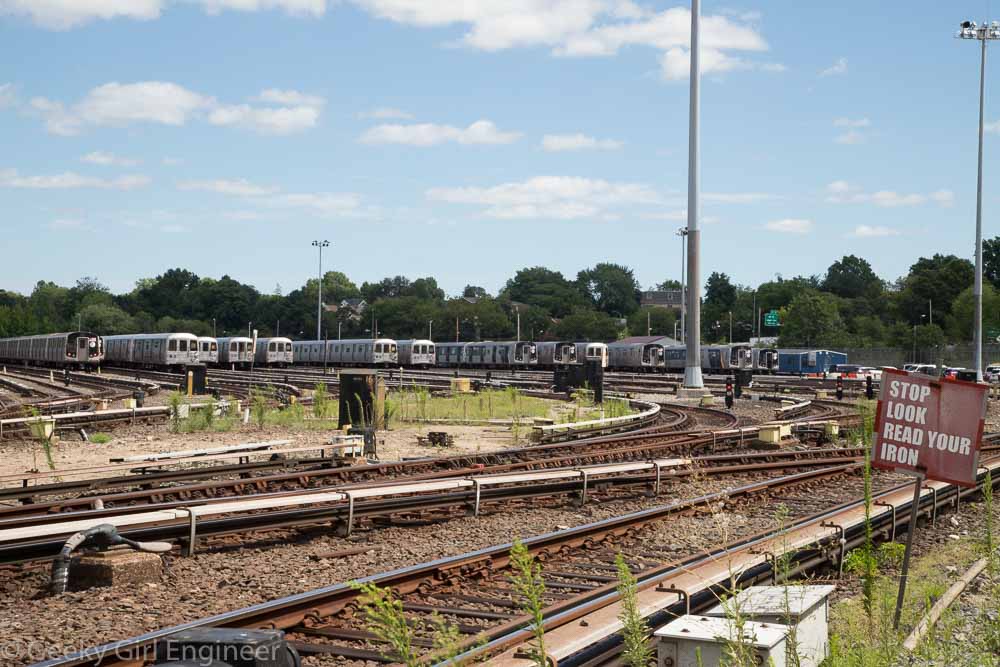
Jamaica Yards. “Stop look read your iron” is a warning to drivers to be alert where they are going. “Iron” refers to the rail.

Of course I am going to be interested int the safety measures. These lights read: Carbon monoxide alarm boiler room, methane alarm gas meter room, high water alarm car wash pump room, and car wash fire alarm.

One of the workers shows us how they test that the shoe, which contacts the third rail, is at the right height
Hudson River Valley by Train
I just got back from a very short trip to Albany, but the main reason I went to Albany was for the train ride up there. Amtrak has several train routes that go from New York City to Albany. I have taken two of these routes before, and I just love the view. I spend almost the entire time staring out the window at the gorgeous Hudson River, which can be seen during the vast majority of the ride. Below are a few photos I took on the route. The first six were taken on the train ride up to Albany as a storm was passing through and the sun was setting. The last three were taken on the way back down to New York City.
Albany, New York
I am visiting Albany for the day, and I spent the day wandering around downtown after I visited the state capitol. The area around the Capitol, Empire Plaza, was built during Governor Nelson Rockefeller’s term, and he evidently micromanaged the design. It is very modern architecture, and it is in complete contrast to the Capitol. The Empire Plaza is fun to photograph because of all the interesting lines of the buildings. The four identical Agency Towers provide repetitive vertical lines, but then The Egg is a weird curved structure. The Corning Tower in the Empire Plaza is the tallest building in the city and has an observation floor, which has outstanding views of the area. Away from the Empire Plaza, the rest of downtown Albany is a mix of historic buildings and some modern buildings. Also, Albany is right on the Hudson River, and a park on the river has nice views of the river.
New York State Capitol
I spent the day wandering around Albany today, and I started the day off with a tour of the Capitol. The New York Capitol is gorgeous. According to the tour guide, it was way over budget and way behind schedule when then Governor Teddy Roosevelt finally said, it’s done, no more. The guide pointed out some stone that was never carved because of that. The stone work is amazing none the less. There are numerous different stones used, and it is all exquisite.
From the outside, the building is beautiful, even without the domed tower it was supposed to have. I lost count of how many different architects the building had, but the style of the building is different in various areas because of that.
The Senate Chamber is gorgeous with gold paneling and beautiful marble tiles on the walls. My favorite part of it is that the chamber has two fireplaces that haven’t been used in decades since the building got central heat and air. Because of the acoustics in the chamber, it is hard to have a private conversation, so the two fireplaces are called “whispering fireplaces” where senators can have private conversation. They even keep folding chairs in the fireplaces for this activity. I find this hilarious. Even better, I noticed a fire extinguisher next to one of the fireplaces. Is it for heated political arguments?
The Assembly Chamber is not as exquisite as the Senate Chamber, but it is pretty also. According to the guide, the current ceiling in the room is the third one. The first one kept cracking and falling apart to the degree that large stones fell onto the ground. Then the second version was mainly papier-mache and wood. It was supposed to be solid wood, but such bad, vague specifications were written into the contract that the builder substituted papier-mache. At some point after this when the legislatures discovered this they sued, but they lost in court because the specifications were so bad. There is a lesson to be learned there. The paper-mache ended up saving the room during a fire in 1911. This is now the third ceiling, (I wasn’t clear on this) built after the fire.
The hallways and the staircases are some of the most beautiful areas of the building. The Great Western staircase is so beautiful that my photos cannot do it justice.




